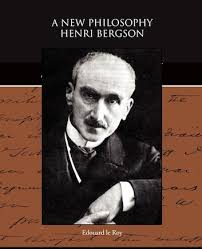Chapter IV — Critique of Language
byChapter IV offers a striking departure from traditional philosophical thought by challenging how we perceive and interpret reality. Henri Bergson insists that what we commonly call perception is not simply a private mental image but a direct connection with the real world. However, our practical needs limit this connection, pushing us to filter and simplify what we experience. What reaches our awareness is only a fraction of what exists, trimmed by usefulness and habit. In this sense, ordinary perception is less about truth and more about survival. Yet beyond that filtered view, a fuller and richer field of reality remains—alive, fluid, and mostly untouched by conventional thought.
Bergson sees language as both a necessity and a trap. While it helps us function and communicate, it also freezes reality into fixed categories. Concepts give names to things, but in doing so, they often distort the movement and vitality of what they describe. For instance, when we speak of an object or an action, we assign it a label that strips it of its evolving nature. This rigid framework is effective for practical reasoning but misleading when trying to understand living processes. Reality does not stand still, but language forces it to. Thus, Bergson urges a return to immediacy—not by rejecting thought, but by reshaping how we use it.
Dynamic schemes, as introduced in this chapter, present a more flexible way to think. They mirror motion rather than structure, capturing the unfolding of thought as it happens. Unlike static concepts that attempt to define, dynamic schemes follow the curve of development. They don’t aim to contain ideas but to accompany them as they move. This shift marks a step closer to reality as it is lived, not just understood. Bergson suggests that genuine understanding arises not from analysis alone but from this continuous mental engagement. The world, after all, is not built from still images—it flows like a stream. And to grasp it, we must let thought flow too.
Analytical thinking, in Bergson’s critique, often takes things apart to make sense of them. But once divided, the pieces rarely go back together in the same way. Life’s unity is sacrificed for the sake of clarity. In this view, analysis becomes a trade-off—we gain explanation but lose the richness of experience. What’s missing is the transition between states, the invisible thread that links moments together. Bergson wants us to notice that link. In doing so, we recover something essential: a way of thinking that remains faithful to time, movement, and change. The challenge is not to replace logic, but to restore its balance with intuition.
This intuitive approach goes beyond just feeling. It is a disciplined effort to reach beneath surface representations and into the continuous becoming of things. Like navigating deeper levels of thought, it moves from shallow interpretations toward a more complete, direct apprehension. Where concepts stand still, intuition travels. It doesn’t reduce complexity but engages with it. And it sees the world not as a set of objects, but as a rhythm of relations. This way of knowing cannot be diagrammed or boxed in, because it changes as we change. Each new act of perception becomes a fresh meeting with reality, not a repetition of what was known before.
Bergson’s criticism of static language points to a larger concern with modern philosophy and science. In their effort to define and measure, they often leave out what can’t be quantified: duration, quality, transformation. But life is not a chart. It is a process, a pulse, a shifting tapestry of experience. The more we rely on rigid frames, the more we lose our connection to that living truth. Bergson believes we need to reawaken our ability to think in time, not just about time. And that begins by letting go of the illusion that words and systems can fully capture what moves.
In the end, the chapter offers a call to return thought to its source—our direct, evolving experience of the world. This doesn’t mean abandoning logic or language but expanding them through intuition. It means trusting the mind’s ability to move with life, not just map it. Through this shift, Bergson believes we can encounter reality more honestly, not as an object to master but as a presence to meet. His philosophy invites not only deeper thought, but also a deeper way of living—one shaped by awareness, motion, and genuine engagement with the ever-changing fabric of existence.

